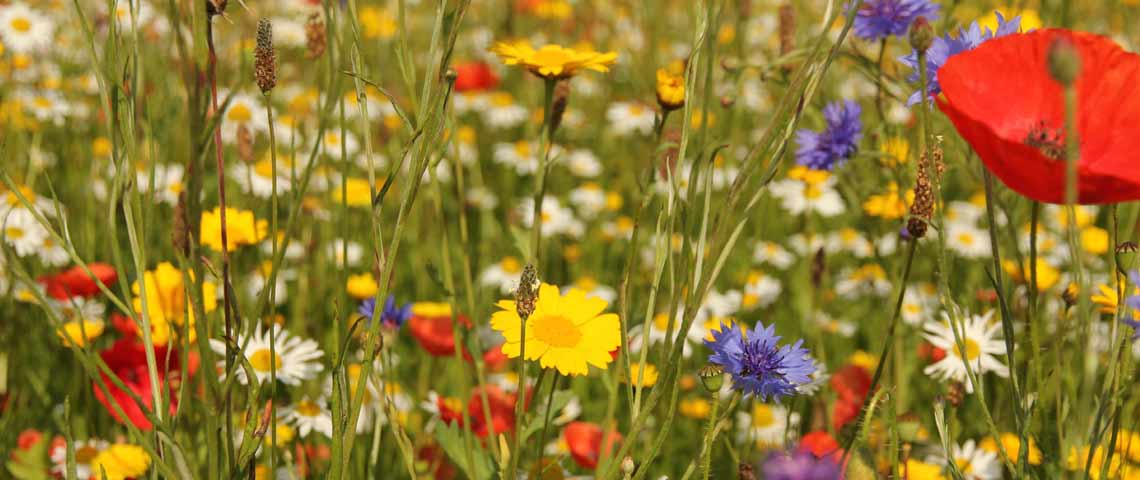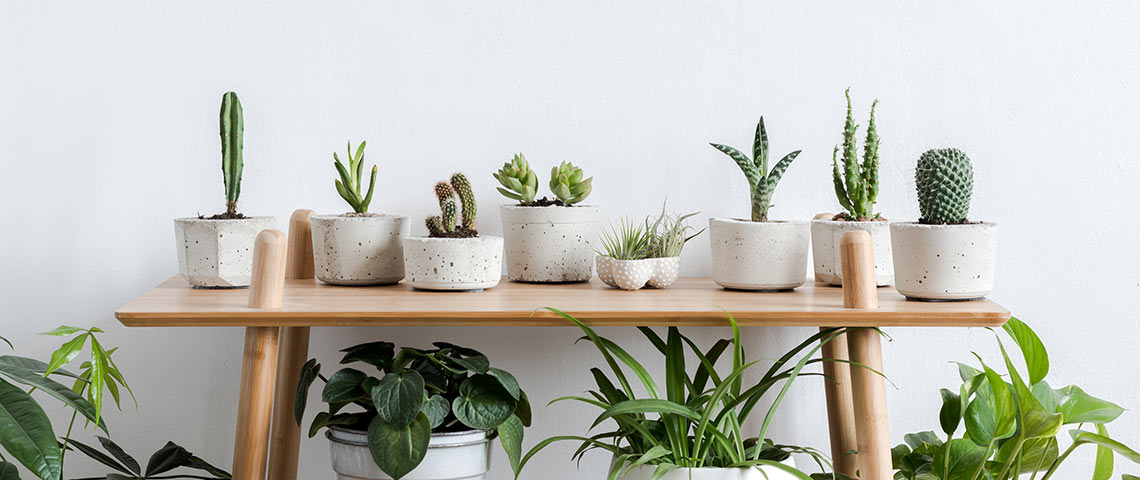How to Attract Butterflies and Hummingbirds to Your Yard
One of the great things about having your own yard is the difference it can make in the world. No matter its size, your yard can encourage biodiversity and support pollinators like butterflies, bees and hummingbirds. As cities and suburbs expand, pollinator habitat dwindles. Let's face it: They could use a hand. You can be the one to step up to the task. And it's definitely a win-win.
When you plant to attract pollinators, you boost biodiversity — and become the neighborhood hangout for butterflies, hummingbirds and bees. They'll return the favor by pollinating everything from flowers to lawn clover, including your vegetables and fruits. So make an impact. Provide the things pollinators need, then sit back and enjoy the fun.
- Flowers for Nectar and Pollen
- Pollinator Shelter and Nesting Habitat
- Pollinator Water and Puddle Stations
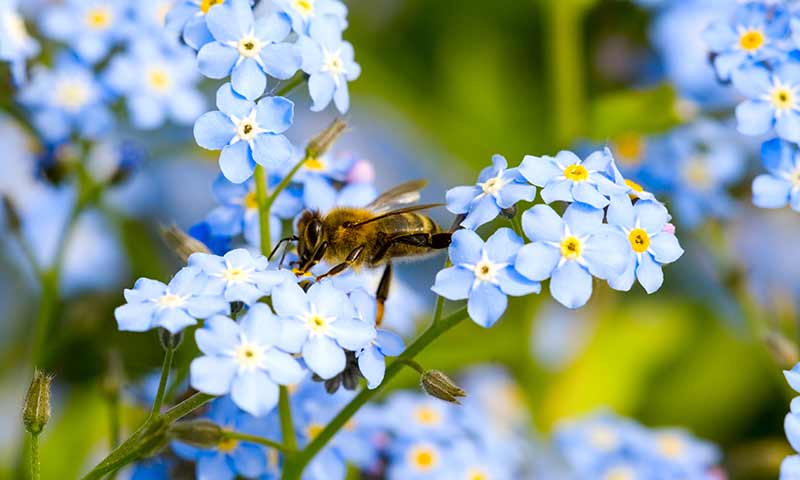
Forget-me-nots and other wildflowers provide pollen and nectar for visiting bees.
Flowers for Nectar and Pollen
When pollinators flit from flower to flower, their movements can seem random. Don't be fooled: They have a prize in mind. When it comes to flowery food, pollinators like different menus. Butterflies, hummingbirds and bees eat nectar, but bees consume pollen, too.
Open-faced flowers, like zinnias and sunflowers, make easy feeding for bees and butterflies. Hummingbirds? They go for trumpet-like blooms tailor-made for long, tiny beaks.
Gardens filled with diverse plants welcome all kinds of pollinators, regardless of their needs. One of the simplest ways to make it happen is to follow Mother Nature's lead. A sunny wildflower garden with vibrant colors and varied shapes makes your intentions clear — and gives pollinators a reason to visit and move in.
Our collection of premium wildflower mixes makes it simple to start a wildflower garden in your yard. Pennington Wildflower Mix Hummingbird and Butterfly Mixture gets pollinators on board with perennial and annual wildflowers they love. You can mix and match with our region-focused wildflower mixes, from the South to the Pacific Northwest.
Trust us. Starting a wildflower garden has never been easier. We've even included the mulch. Just loosen the top few inches of soil and apply your wildflower mix. (A spreader works, but so does a hand!) Add some Pennington Rejuvenate Plant Food All-Purpose 4-4-4 to revitalize soil and help wildflowers thrive. Just follow the label instructions, water your seeds in and keep your wildflower garden moist until growth begins.
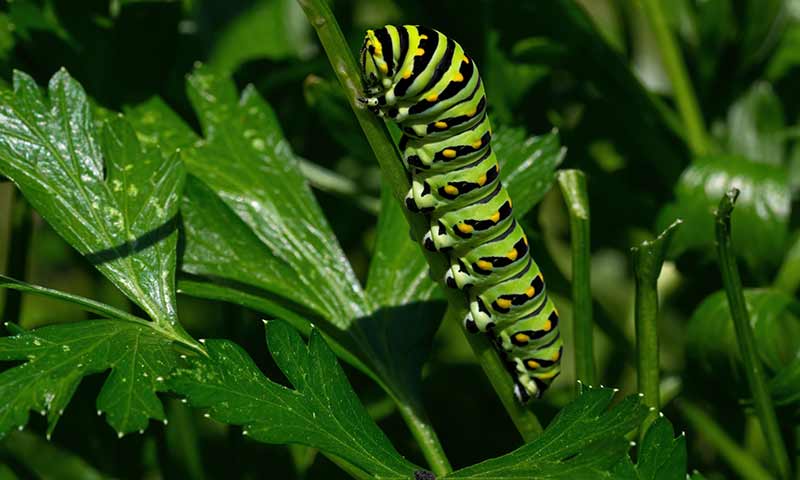
Plant extra parsley to share with the next generation of black swallowtails.
Pollinator Shelter and Nesting Habitat
Flowers are just one facet of how your homegrown ecosystem can attract butterflies, hummingbirds and bees. Pollinators that call your yard home need shelter from wind and weather, and safe habitat where they can nest and breed.
Most native bees are docile ground-nesters. Keep some spots of bare, mulch-free soil in your yard or garden, and they'll take it from there. Other bees naturally seek out hollow reeds or tree stumps. Provide the shelter and nesting spots they seek with a bee hotel strategically placed near your wildflower garden.
Hummingbirds build mini nests in trees, vines or shrubs. But butterflies don't nest. They lay eggs on plants intended to feed caterpillars when they hatch. Butterflies aren't picky about nectar, but some are exclusive when laying eggs. Migratory monarch butterflies feed on lots of flowers, but they only lay eggs on milkweed-family plants — the only plants monarch caterpillars eat.
Black swallowtail butterflies lay their eggs on plants in the carrot family, which includes plants like celery, Italian parsley and fernleaf dill. When you augment your wildflower garden with carrots or their cousins, you provide habitat for the butterfly generation being born in your yard.
Sustainable lawn alternatives such as clover mixes and vegetable gardens help contribute to pollinator shelter and habitat, too. And with fruiting vegetables like tomatoes or hot peppers, pollinated and cross-pollinated flowers translate to bigger, better harvests for you.
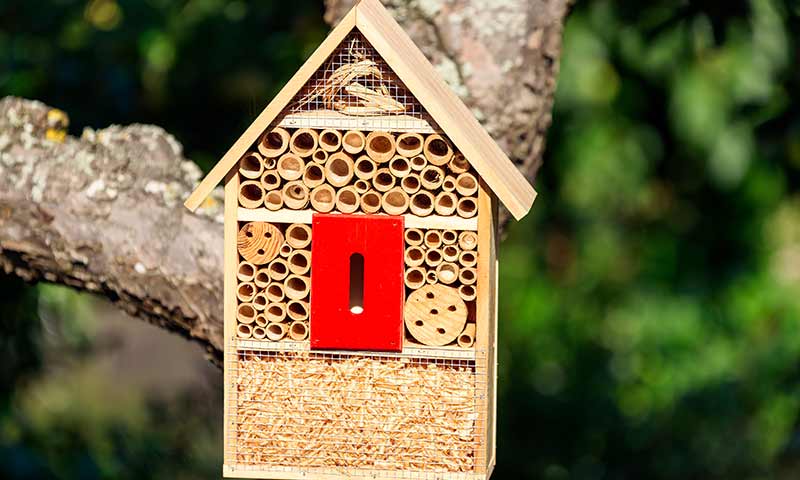
A bee hotel provides pollinating insects with places to rest and nest.
Pollinator Water and Puddle Stations
Pollinators expend a lot of energy as they feed and pollinate your blooms, and they work up a thirst. They need sunny spots to rest and warm themselves, shady spots to beat the heat, and watering stations where they can drink or bathe.
Hummingbirds don't drink as much water as some birds, but they still need water for drinking and getting clean. Birdbaths with fountains or garden misters are popular spots when hummingbirds need a shower or a drink.
Bees and butterflies will frequent shallow birdbaths, but mud puddles are more to their liking. Puddles provide water, but they also nurture pollinators with nutrients from the mud. Creating a puddle station is as simple as it sounds. You can go ultra-basic or dress it up.
Pick a sunny spot near your wildflowers. Then channel your mudpuddle prowess. For the basic approach, create a very shallow depression in your soil. Water the area, and you're done.
For more sophisticated puddle tastes, fill a saucer with sand and colorful pebbles. Keep it at ground level or elevate it on a riser or stump. Add enough water so the sand is fully wet but not submerged. Monitor your saucers and recharge your pollinator puddle whenever water gets low.
With wildflowers at work in your yard, you can attract pollinators, boost your garden's beauty quotient and advance hyper-local biodiversity. Ready to turn your yard into a haven for pollinators and people? Us, too. We're Pennington. We're here to help your dreams come true.
Always read product labels thoroughly and follow instructions.

